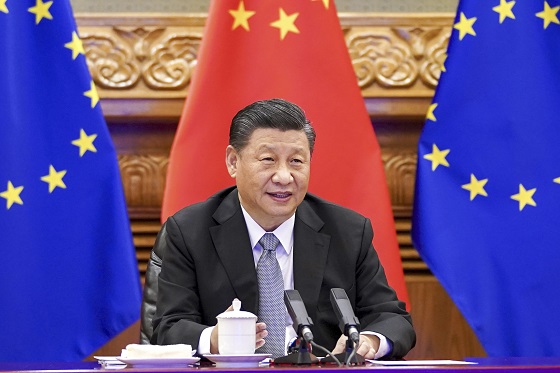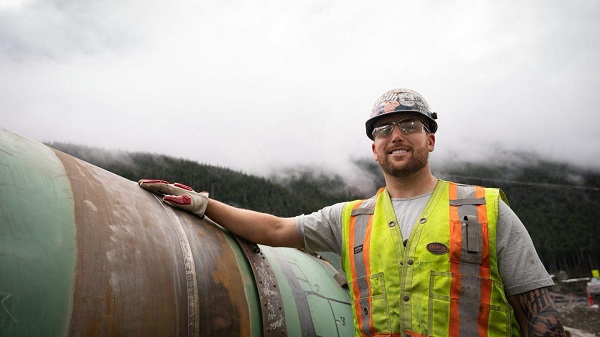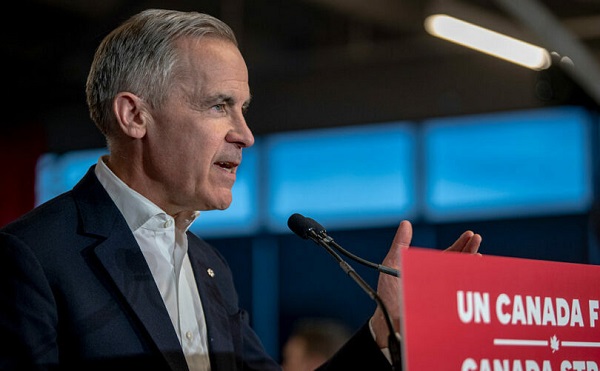Alberta
Hundreds of tests uncover three more confirmed COVID-19 cases in Alberta. Call 8-1-1 if you show symptoms

From The Province of Alberta
New cases of COVID-19 confirmed in Alberta
Alberta’s chief medical officer of health has announced three new cases of novel coronavirus, officially known as COVID-19, in the province.
There are now seven confirmed cases of the virus in Alberta. These individuals are all recovering in isolation at home with support from public health officials.
“These cases were detected thanks to the aggressive public health measures and expanded testing that we have put in place. By acting quickly to isolate close contacts of COVID-19 cases, we help prevent the virus’s spread and protect Albertans. While additional cases will likely be detected in the coming days, Albertans can trust that we are doing everything we can to protect their health.”
“Alberta and the rest of Canada are working extremely hard to detect and isolate COVID-19 to limit the spread in our communities. I have every faith in our dedicated health-care providers and remind all Albertans that medical experts still consider the risk level to be low in our province.”
Case 5 is a woman in her seventies who lives in the Edmonton zone. She is a close contact of an Edmonton zone man with COVID-19, who was announced on March 8. She was also on-board a Grand Princess Cruise before returning home on Feb. 21. Her symptoms started after returning to Alberta.
Case 6 is a man in his thirties from the Calgary zone. He is a close contact of the Calgary zone woman announced as a case of COVID-19 on March 8. He had travelled to Ukraine, Netherlands and Turkey and returned to Alberta on March 2. His symptoms started after his return.
Case 7 is a woman in her fifties from the Calgary zone. She was on-board the MS Braemar cruise ship from Feb. 11 to March 4. She developed symptoms after her return home and was tested at an assessment centre on March 8.
Public health investigations into these new cases are underway. Close contacts have been identified and are being asked to self-isolate for 14 days. These individuals will be monitored for symptoms during this time.
All cases of COVID-19 announced in Alberta are now confirmed. Positive samples tested by Alberta laboratories no longer require further confirmation from the National Microbiology Laboratory.
Alberta continues to ask all returning travellers from outside Canada to monitor their health and, if they experience symptoms of fever or cough, to immediately self-isolate and call Health Link 811.
Anyone who is feeling ill should stay home and not visit hospitals, long-term care facilities or supportive living accommodations. People in these locations are at the highest risk of complications from COVID-19, influenza and other respiratory viruses.
Albertans are strongly encouraged to visit alberta.ca/COVID19 for advice on preparing for COVID-19, testing and other useful information.
Quick facts
- The current risk of being exposed to COVID-19 in Alberta is low.
- The most important measure that Albertans can take to prevent COVID-19 is to practise good hygiene.
- This includes cleaning your hands regularly, avoiding touching your face, coughing or sneezing into your elbow or sleeve, disposing of tissues appropriately, and especially staying home and away from others if you are sick.
- Anyone who has health concerns or is experiencing symptoms of COVID-19 linked to recent travel should contact Health Link 811 to see if followup testing is required.
Alberta
Red Deer Justice Centre Grand Opening: Building access to justice for Albertans

The new Red Deer Justice Centre will help Albertans resolve their legal matters faster.
Albertans deserve to have access to a fair, accessible and transparent justice system. Modernizing Alberta’s courthouse infrastructure will help make sure Alberta’s justice system runs efficiently and meets the needs of the province’s growing population.
Alberta’s government has invested $191 million to build the new Red Deer Justice Centre, increasing the number of courtrooms from eight to 12, allowing more cases to be heard at one time.
“Modern, accessible courthouses and streamlined services not only strengthen our justice
system – they build safer, stronger communities across the province. Investing in the new Red Deer Justice Centre is vital to helping our justice system operate more efficiently, and will give people in Red Deer and across central Alberta better access to justice.”

Government of Alberta and Judiciary representatives with special guests at the Red Deer Justice Centre plaque unveiling event April 22, 2025.
On March 3, all court services in Red Deer began operating out of the new justice centre. The new justice centre has 12 courtrooms fully built and equipped with video-conference equipment to allow witnesses to attend remotely if they cannot travel, and vulnerable witnesses to testify from outside the courtroom.
The new justice centre also has spaces for people taking alternative approaches to the traditional courtroom trial process, with the three new suites for judicial dispute resolution services, a specific suite for other dispute resolution services, such as family mediation and civil mediation, and a new Indigenous courtroom with dedicated venting for smudging purposes.
“We are very excited about this new courthouse for central Alberta. Investing in the places where people seek justice shows respect for the rights of all Albertans. The Red Deer Justice Centre fills a significant infrastructure need for this rapidly growing part of the province. It is also an important symbol of the rule of law, meaning that none of us are above the law, and there is an independent judiciary to decide disputes. This is essential for a healthy functioning democracy.”
“Public safety and access to justice go hand in hand. With this investment in the new Red Deer Justice Centre, Alberta’s government is ensuring that communities are safer, legal matters are resolved more efficiently and all Albertans get the support they need.”
“This state-of-the-art facility will serve the people of Red Deer and surrounding communities for generations. Our team at Infrastructure is incredibly proud of the work done to plan, design and build this project. I want to thank everyone, at all levels, who helped make this project a reality.”
Budget 2025 is meeting the challenge faced by Alberta with continued investments in education and health, lower taxes for families and a focus on the economy.

Quick facts
- The new Red Deer Justice Centre is 312,000 sq ft (29,000 m2). (The old courthouse is 98,780 sq ft (9,177 m2)).
- The approved project funding for the Red Deer Justice Centre is about $191 million.
Alberta
Made in Alberta! Province makes it easier to support local products with Buy Local program

Show your Alberta side. Buy Local. |
When the going gets tough, Albertans stick together. That’s why Alberta’s government is launching a new campaign to benefit hard-working Albertans.
Global uncertainty is threatening the livelihoods of hard-working Alberta farmers, ranchers, processors and their families. The ‘Buy Local’ campaign, recently launched by Alberta’s government, encourages consumers to eat, drink and buy local to show our unified support for the province’s agriculture and food industry.
The government’s ‘Buy Local’ campaign encourages consumers to buy products from Alberta’s hard-working farmers, ranchers and food processors that produce safe, nutritious food for Albertans, Canadians and the world.
“It’s time to let these hard-working Albertans know we have their back. Now, more than ever, we need to shop local and buy made-in-Alberta products. The next time you are grocery shopping or go out for dinner or a drink with your friends or family, support local to demonstrate your Alberta pride. We are pleased tariffs don’t impact the ag industry right now and will keep advocating for our ag industry.”
Alberta’s government supports consumer choice. We are providing tools to help folks easily identify Alberta- and Canadian-made foods and products. Choosing local products keeps Albertans’ hard-earned dollars in our province. Whether it is farm-fresh vegetables, potatoes, honey, craft beer, frozen food or our world-renowned beef, Alberta has an abundance of fresh foods produced right on our doorstep.
Quick facts
- This summer, Albertans can support local at more than 150 farmers’ markets across the province and meet the folks who make, bake and grow our food.
- In March 2023, the Alberta government launched the ‘Made in Alberta’ voluntary food and beverage labelling program to support local agriculture and food sectors.
- Through direct connections with processors, the program has created the momentum to continue expanding consumer awareness about the ‘Made in Alberta’ label to help shoppers quickly identify foods and beverages produced in our province.
- Made in Alberta product catalogue website
Related information
-

 Business1 day ago
Business1 day agoTrump: China’s tariffs to “come down substantially” after negotiations with Xi
-

 2025 Federal Election2 days ago
2025 Federal Election2 days agoMark Carney Wants You to Forget He Clearly Opposes the Development and Export of Canada’s Natural Resources
-

 Business1 day ago
Business1 day agoTrump considers $5K bonus for moms to increase birthrate
-

 Business2 days ago
Business2 days agoHudson’s Bay Bid Raises Red Flags Over Foreign Influence
-

 2025 Federal Election2 days ago
2025 Federal Election2 days agoCanada’s pipeline builders ready to get to work
-

 2025 Federal Election1 day ago
2025 Federal Election1 day agoPolice Associations Endorse Conservatives. Poilievre Will Shut Down Tent Cities
-

 Business1 day ago
Business1 day agoChinese firm unveils palm-based biometric ID payments, sparking fresh privacy concerns
-

 2025 Federal Election2 days ago
2025 Federal Election2 days agoCanada’s press tries to turn the gender debate into a non-issue, pretend it’s not happening




